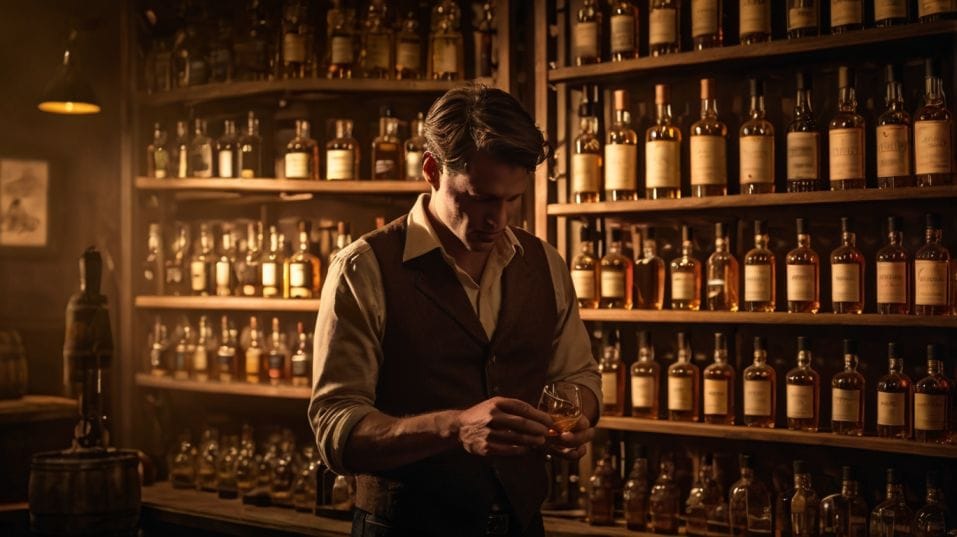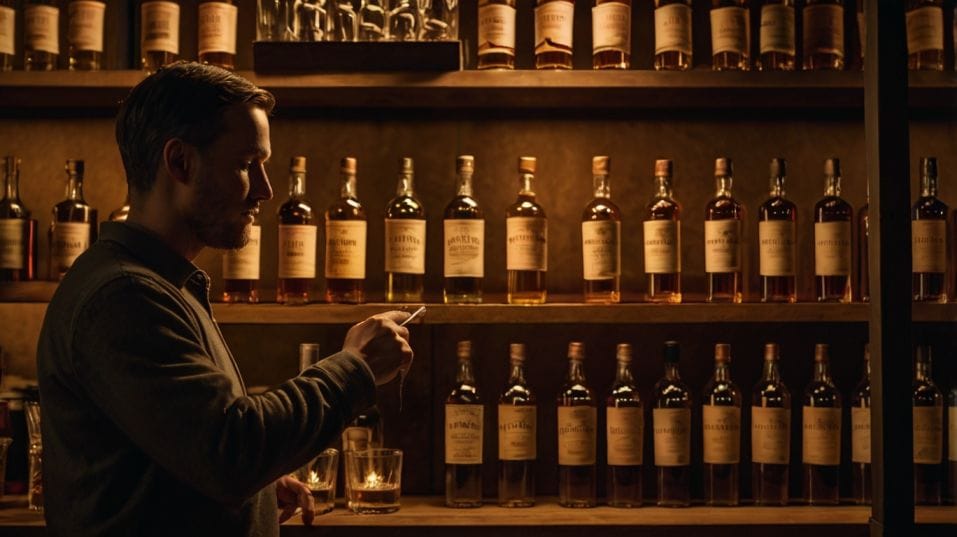Decoding the Labels on Rare Bottles
Learn to decode rare whiskey labels with confidence. From age and casks to sourcing, this guide helps you collect and taste smarter.

Ever wonder what a whiskey label isn’t telling you—but should be? If you’re new to collecting or just starting to take whiskey seriously, knowing how to decode the fine print can change everything.
Beyond the buzzwords and flashy bottles is a quiet stream of truth. Hidden in numbers, barrel types, and phrasing are the real clues to what’s in the glass. Learn to read smarter, sip better, and skip the hype.
The Anatomy of a Label: What Actually Matters
Every whiskey label is trying to sell you something. A legacy. A legend. A lifestyle.
But underneath the romantic fonts and vintage graphics, there’s a different language—one that tells you exactly what you’re paying for and what you’re about to pour into your glass.
Age Statement: Not Just a Number
A 10-year bourbon isn't the same as a 10-year Scotch—and neither one means it's automatically better than something younger. What the age statement really tells you is how long the youngest spirit in the bottle sat in oak.
More time means more interaction with the barrel: more tannins, more complexity, more evaporation. But also more risk. Overaged whiskey can taste like soggy wood or bitter tea leaves.
Start noticing how different age ranges express themselves. A 5-year rye can be sharp and peppery. A 12-year sherried Scotch might drip with dark fruit and spice.
Over time, your palate starts matching numbers to flavors—and you stop needing anyone else’s opinion.

ABV / Proof: The Real Flavor Multiplier
Alcohol by volume (ABV) tells you more than just strength—it tells you how the whiskey will behave in the glass.
Lower proof (40–43%) usually signals smoother, easier sipping. That’s often the distillery’s “entry level” pour. Higher proof—46%, 50%, 60%+—means the spirit hasn’t been watered down much, if at all.
Why does this matter? Because cask strength or barrel proof whiskey hits different. Literally. You’re getting it the way it came out of the barrel. Raw. Intense.
More oils, more fire, more control. You get to decide whether to add water, how much, and when. It's a tool for unlocking layers—not just a test of how tough your palate is.
Know Your Barrels, Know Your Flavor
Labels that list barrel types are giving away their secrets. “Ex-bourbon,” “first-fill sherry,” “port cask finish,” “French oak,” “refill hogshead”—these aren't filler terms. They're cheat codes to how the whiskey tastes.
First-Fill vs. Refill
- First-fill barrels deliver the most flavor—richer vanillas, deeper fruits, more color.
- Refill barrels give the spirit more space to show off its base character, rather than layering on extra sweetness or spice.
Cask Types and Finishes
- Sherry casks tend to bring dark fruit, nuttiness, and warmth.
- Peated whisky in refill bourbon casks lets the smoke punch through cleanly.
- Port or wine finishes often add round sweetness or juicy tannins, especially on the finish.
Start reading these barrel cues as flavor maps. Not every cask combo works, but when you see one that excites you, you’ll start making smarter picks, even with brands you've never heard of.
Distillation and Filtration: Clarity Behind the Curtain
Most whiskey drinkers skip over these, but they matter more than you think. If a label says non-chill-filtered, that’s a good thing.
It means the whiskey hasn’t been stripped of its natural oils and esters—elements that carry flavor, texture, and aroma.
Chill filtration is often done to make the whiskey look “clean” on shelves, especially at lower proofs. But it can flatten the experience.
Likewise, natural color tells you no caramel coloring was added. That’s mostly about transparency—literally and figuratively.
If a producer is proud of the whiskey's natural hue, it usually means they’re not cutting corners elsewhere either.
The more transparent the label, the more confident the distillery. You’re not just buying liquid—you’re buying their process. Good producers want you to know exactly what you're drinking.
Region and Origin: It’s More Than Just the Country
Where a whiskey comes from affects the climate it ages in, the grains it uses, and the style it follows—or breaks.
A bourbon from Texas isn’t aging the same way as one from Kentucky. A single malt from India pulls oak faster than one from Scotland because of heat and humidity.
What to Watch For
- Country of origin: Does it follow traditional laws (Scotch, Bourbon, Irish) or break from them (Japan, Australia)?
- Distillery location: A coastal Islay Scotch will taste nothing like a highland malt, even if they're the same age and cask type.
- Mash bill or grain mix: A bourbon with 35% rye will kick like a mule. One with wheat? Soft, sweet, and round.
This is how you build context. You’ll stop comparing whiskies just by rating—you’ll compare them by intention.
Who Made It: Sourced or Self-Distilled?
This might be the most overlooked—and most important—thing a label can tell you. A lot of "craft" brands don’t distill their own whiskey.
They buy it from a bigger source (usually MGP in Indiana) and blend or finish it under their own label.
That's not a sin. Some of the best bottles come from sourced juice. But if the label is vague—saying “produced by” instead of “distilled and bottled by”—you need to ask why. Good sourcing is transparent. Shady sourcing hides behind words.
Once you start learning which distilleries make what, and how those whiskies taste, you’ll spot trends. You’ll know when a $150 bottle is just a dressed-up $40 one—and when it’s actually worth chasing.
Batch Numbers, Bottles Counts, and Rarity Signals
If a label gives you a batch number, that’s usually a sign of a small or seasonal release. If it tells you the bottle number out of a total run, even better. That kind of specificity means you’re likely drinking something limited—potentially collectible.
Just remember: rarity doesn’t equal quality. A 300-bottle release can still be a mess. But labels that go the extra step to share these details tend to come from producers who care about the final product—not just the marketing.
Final Thoughts: Read Deeper, Drink Smarter
Every time you pick up a rare bottle, the label is either your best ally—or your first warning. It tells you what kind of whiskey this really is, how it was made, and whether it respects your curiosity or tries to outsmart it.
Learn to read beyond the story. Find the facts that shape flavor. Let the fine print guide your palate—not the packaging.
Next time you're at a shop, don't just admire the bottle. Turn it, read it, question it. Pick one with a label that actually teaches you something—and taste the difference for yourself.
Then do it again. This is how you build a collection worth drinking. Not loud. Not trendy. Just damn good whiskey, chosen with intent.




